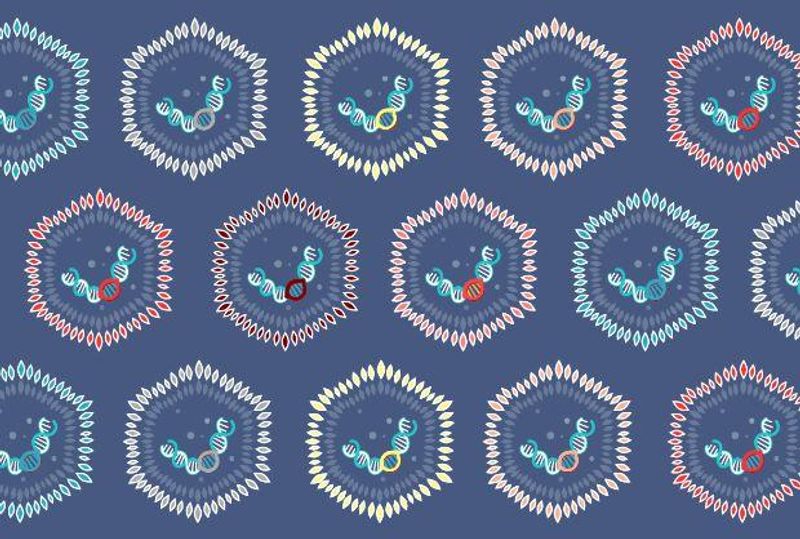New Frontiers in Genomic Medicine at Sanofi

Gene therapies are expanding the concept of medicine to encompass more than small molecules and biologics. This frontier approach is making it possible to help more patients by delivering genetic information directly to cells, repairing the body's ability to make key proteins. This has opened up new possibilities to one day treat or even cure diseases for which few or no other options are available.
With decades of innovation in biomanufacturing, deep expertise in cell and gene therapy, and a range of new technology platforms, Sanofi is dedicated to developing genomic therapies that are accessible for patients throughout the world. Our genomic medicine teams are set up to collaborate seamlessly across functions, making it easier to discover, develop, and manufacture gene therapies for inherited neurological and rare diseases. They insights gained have implications across disease areas, including immuno-oncology.

Genomic technologies
Most viruses are simply genetic material (RNA or DNA) protected by a protein coat. Gene therapies exploit the ability of viruses to attach to a cell, gain entry, and deposit their DNA. But instead of a disease-causing virus, scientists program a non-pathogenic virus – one that does not cause disease – to deliver the replacement gene to cells. These delivery viruses are called viral vectors, and they are one of the fastest-developing technologies in genomic medicine.
Sanofi scientists are combining deep expertise in virus-based vaccines and biologics with advanced technologies to develop novel gene-therapy delivery methods. These include recombinant adeno-associated virus (AAV)-based viral vectors, which our teams can manufacture on a large scale using proprietary technology. This unique in-house capacity supports sustained, rapid innovation. Sanofi scientists are also pursuing nanoparticles, polymers, and other non-viral gene delivery approaches that address diseases for which viral vector-based delivery is challenging.
Capsid evolution
Viruses like AAVs protect their genetic material with a capsid–a protein "shell" that helps the virus deliver its DNA into cells. Sanofi researchers are designing capsids that enable different types of AAVs to enter specific cells. Their goal is to engineer capsids that target specific tissues, for example muscle or nerve, so that the gene therapy can be deployed efficiently within the patient’s body. This could overcome several major obstacles in gene therapy development.
Natural exposure to AAVs can cause people to develop antibodies that would neutralize a therapeutic AAV upon delivery, preventing any potential benefit. Sanofi scientists are engineering capsids that could help ensure the therapeutic AAV is still effective, even if the person receiving it has natural immunity.

Technology Platforms
RNA-based therapeutics
Messenger RNA (mRNA) translates the instructions in DNA into proteins, which do everything from hold cell walls together to catalyze biological reactions. A damaged gene creates damaged mRNA, which in turn creates damaged proteins–and that can lead to disease.
Sanofi R&D teams are developing a range of RNA-based therapeutics and vaccines, both in house and in partnership with innovative companies. One is mRNA therapy, which delivers protein-making instructions directly into cells, giving them the correct blueprint for creating healthy proteins.
Practice-changing medicine
Sanofi's end-to-end capabilities for discovery, development, and manufacturing in genomic medicine, together with streamlined operations and collaborations, are pushing the frontiers of medicine toward practice-changing medicines that can transform lives.
Related stories

Gene Therapy at a Glance

Sanofi Technology Platforms
References
- American Society of Gene & Cell Therapy. Different approaches. Available at: http://patienteducation.asgct.org/gene-therapy-101/different-approaches. Last accessed 4 January 2021.
- Alencastro G, Pekrun K, Valdmanis P, et al. Tracking Adeno-Associated Virus Capsid Evolution by High-Throughput Sequencing. Human Gene Therapy. 2020 May;31(9-10):553-564. DOI: 10.1089/hum.2019.339
- Friedmann T. A brief history of gene therapy. Nature Genetics. 1992 Oct;2(2):93-98. DOI: 10.1038/ng1092-93.